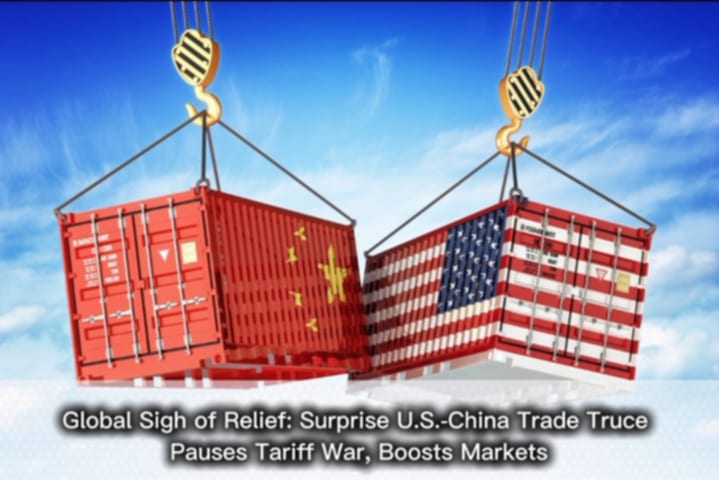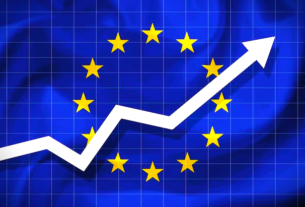Geneva / Washington, May 13, 2025 In a dramatic and unexpected turnaround, the United States and China have reached a temporary trade truce, dialing back punitive tariffs in a deal that has stunned global markets and offered a much-needed reprieve to businesses and economies teetering under the threat of a full-blown trade war.
After two days of intense negotiations in Geneva, the world’s two largest economies agreed to slash most tariffs imposed over the past year, ushering in a 90-day cooling-off period aimed at forging a more permanent trade agreement.
A Deal No One Saw Coming
Just days ago, such a breakthrough seemed implausible. But by Monday, the U.S. agreed to reduce tariffs on most Chinese goods from a staggering 145% down to 30%, while China responded by slashing its own duties on American imports from 125% to just 10%. While some U.S. tariffs particularly on steel, autos, and aluminum remain in place, the scope of the rollback exceeded expectations and triggered a surge in global markets.
“This is a dream scenario,” said Dan Ives of Wedbush Securities. “Markets were bracing for escalation, but what they got was a surprising de-escalation.”
Markets Rally, Businesses Breathe Easier
Wall Street roared in response. The Dow Jones Industrial Average jumped 1,100 points, the Nasdaq gained over 4%, and stock markets across Europe and Asia followed suit. Bond yields and the dollar climbed, reflecting renewed confidence in global economic growth.
Exporters in both countries, particularly small businesses that had been crushed under rising costs expressed cautious optimism. Chinese manufacturers of consumer goods like artificial Christmas trees and electronics, some of whom had paused production or furloughed workers, now see the 30% tariff as manageable and are ramping up shipments during the truce window.
Behind Closed Doors: A Tense but Productive Weekend
Talks in Geneva were led on the U.S. side by Treasury Secretary Scott Bessent, who described the agreement as the beginning of a “durable trade deal” rather than a quick fix. He emphasized that neither nation wants to “decouple” their economies, a key concern amid rising economic nationalism.
Despite their disagreements, both sides agreed to maintain the new tariff structure for 90 days, during which they will work toward a more comprehensive trade pact. China also promised to roll back some non-tariff restrictions, potentially easing curbs on critical minerals used in high-tech manufacturing.
Fentanyl, Factories, and Frontloading
Though the talks were centered on trade, the fentanyl crisis was a notable undercurrent. In one vivid moment, Bessent reportedly used grains of sugar to demonstrate to Chinese officials how small amounts of fentanyl can kill thousands. Chinese officials, unusually, included the Minister of Public Security, signaling Beijing’s willingness to address U.S. concerns on the illicit drug.
For U.S. businesses, the rollback may be a lifeline. Retailers warned of empty shelves without access to Chinese imports, and economists had warned of rising inflation and supply chain disruptions if tariffs escalated. The truce halts that spiral for now.
“This pause feels like the difference between a trade war and a trade negotiation,” said Robin Xing, Chief China Economist at Morgan Stanley. He predicts a flurry of export activity over the next three months as both sides front load shipments before any new deal or breakdown.
Challenges Ahead
Despite the positive turn, significant tensions remain. Bessent acknowledged ongoing concerns over China’s currency policies and industrial subsidies, both of which will feature prominently in the next round of negotiations.
And while the temporary deal has sparked optimism, analysts warn that 30% tariffs are still steep, and trade patterns may already be shifting. Chinese exports to the U.S. dropped 21% in April, while exports to Southeast Asia surged, a sign that some manufacturers are already rerouting trade to avoid U.S. duties.
What’s Next?
The clock is now ticking. The 90-day truce offers breathing room but not a solution. Both sides are expected to reconvene for further talks in July, aiming for a more permanent agreement before the pause expires.
For now, businesses, investors, and consumers around the world are hopeful that this surprising ceasefire may mark the beginning of a more stable chapter in the U.S.-China trade relations.
Bottom Line:
After months of escalating rhetoric and economic brinkmanship, the U.S. and China have hit pause not on their rivalry, but on a trade war that had threatened global stability. The challenge now is turning this fragile truce into lasting peace.




